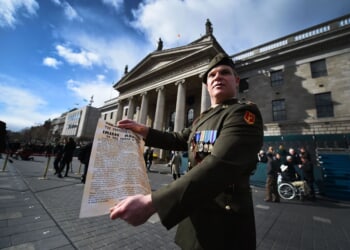The small and nimble FRS.1 Sea Harrier defied the prevailing logic of the 1970s and 1980s, in which air forces competed to build bigger and faster fighter jets.
The Hawker Siddeley Sea Harrier FRS.1 occupies a unique place in aviation history as the only V/STOL jet to achieve true front-line fighter status—with an unblemished air-to-air combat record. When the Sea Harrier debuted with the Royal Navy in 1980, it represented a radical departure from traditional naval aviation. Instead of relying on massive supercarriers and catapults, the British wanted a compact, versatile fighter that could launch from small “through-deck cruisers,” austere forward bases—or even parking lots if necessary.
That design philosophy produced a fighter wholly unlike any other in the NATO inventory, the small, lightweight Sea Harrier, capable of hovering like a helicopter, but fighting like a jet.
The FRS.1 Sea Harrier’s Specifications
- Year Introduced: 1980
- Number Built: 57 FRS.1 (later upgraded to FA.2)
- Length: ≈46 ft (14.1 m)
- Wingspan: ≈25.3 ft (7.7 m)
- Weight (MTOW): ≈25,000 lb (11,340 kg)
- Engine: One Rolls-Royce Pegasus 104/106 turbofan with vectored thrust (~21,500 lbf)
- Top Speed: ≈735 mph (1,183 km/h) / Mach 0.95
- Range: ≈580 nmi (667 mi, 1,070 km)
- Service Ceiling: ≈51,000 ft (15,500 m)
- Loadout: AIM-9L Sidewinder, 2 × 30mm ADEN cannons, bombs, rockets, Sea Eagle (later variants)
- Aircrew: 1
The FRS.1 Was an Extremely Unconventional Fighter Jet
From a technical perspective, the FRS.1 was a close relative of the RAF’s Harrier GR.1/GR.3, outfitted with identical Pegasus vectored-thrust turbofan engines, allowing for the signature vertical operations. But the Sea Harrier was optimized—as the name implies—for naval operations. Changes included a raised cockpit to improve visibility during carrier approaches; corrosion-resistant airframe to withstand the salt exposure of life at sea, a reinforced undercarriage to withstand the punishment of carrier landings and an upgraded Ferranti Blue Fox radar, offering beyond-visual-range (BVR) capability. The FRS.1 also housed two 30-mm ADEN cannons and four AIM-9L Sidewinder missiles, which were remarkably advanced for the 1980s.
On paper, the FRS.1’s performance was modest: the aircraft was subsonic only, with limited range and a relatively small payload. But the Sea Harrier’s strengths lay in the ability to operate from tiny decks, which allowed the Royal Navy to project fighter power far beyond what its small fleet would have otherwise allowed. The Sea Harrier also benefited from a high thrust-to-weight ratio, giving the aircraft excellent acceleration and climb at low altitudes, while its near-instantaneous turn capability made it exceptionally dangerous in close-in dogfights.
Argentina Didn’t Know What Hit It
The FRS.1’s defining moment came during the Falklands War of 1982. Operating from the HMS Hermes and HMS Invincible, in terrible weather conditions far from home, the Sea Harrier flew continuous combat air patrol missions, intercepting Argentine aircraft like the Mirage III and A-4 Skyhawk. Through pilot skill, good radar discipline, and the AIM-9L missiles, the Sea Harrier achieved a remarkable combat record: 20 confirmed air-to-air kills with zero losses.
The Sea Harrier remained in service through the 1990s, eventually upgraded into the FA.2 with a more powerful radar. But the aircraft was retired in 2006, largely due to budget constraints and the impending arrival of the F-35B Lightning II, another V/STOL-capable fighter with fifth-generation technology, including stealth, sensor fusion, and advanced networking.
The Sea Harrier’s cousin, the US Marine Corps’ own Harrier variant (the AV-8B), is also being phased out in favor of the F-35B, signaling an end to the Harrier era. But the viability of V/STOL performance will always be attributable to the original British Harrier fleet, and their performance under the duress of combat—a proof of concept that lives on today in the F-35B.
About the Author: Harrison Kass
Harrison Kass is a senior defense and national security writer at The National Interest. Kass is an attorney and former political candidate who joined the US Air Force as a pilot trainee before being medically discharged. He focuses on military strategy, aerospace, and global security affairs. He holds a JD from the University of Oregon and a master’s in Global Journalism and International Relations from NYU.
Image: Wikimedia Commons.

















